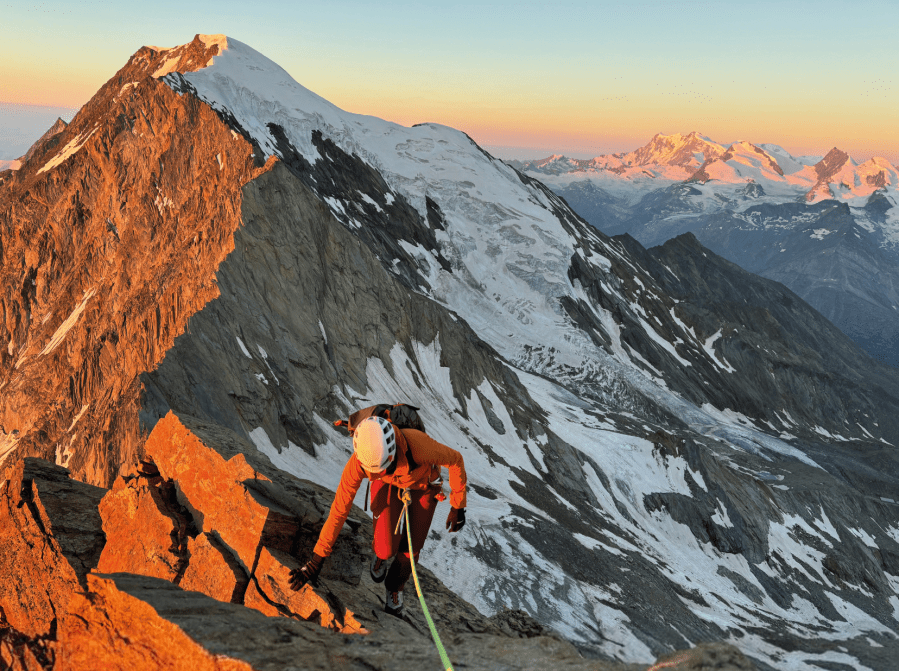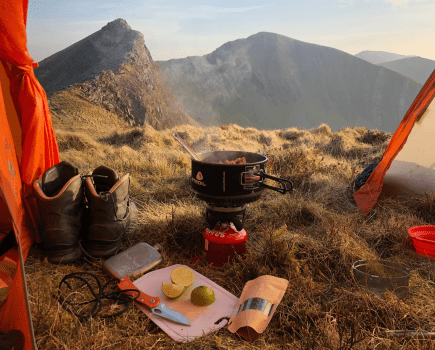Stuart McAleese, Senior Instructor at Glenmore Lodge, guides you through the alpine prep you can do in your home hills to ready yourself for big adventures further afield.
Scottish winter mountaineering and climbing is great and can be used to develop a skillset and experience applicable to any mountain range. For those with alpine aspirations, the Scottish winter provides training environments with unique weather and conditions that are respected throughout the climbing community in terms of alpine prep.
Main image: Lagginhorn (4010m) South Ridge, Switzerland | Credit: Stuart McAleese
Building your team
Winter offers opportunity to head out with your climbing partner or meet others and start making alpine plans. Try and plan time climbing or mountaineering with your partner/team who you’ll be heading to the Alps with, this is a great opportunity to learn together before going further afield. Having a good time is important, so time on and off the mountain, whether successful or not, is time well spent.
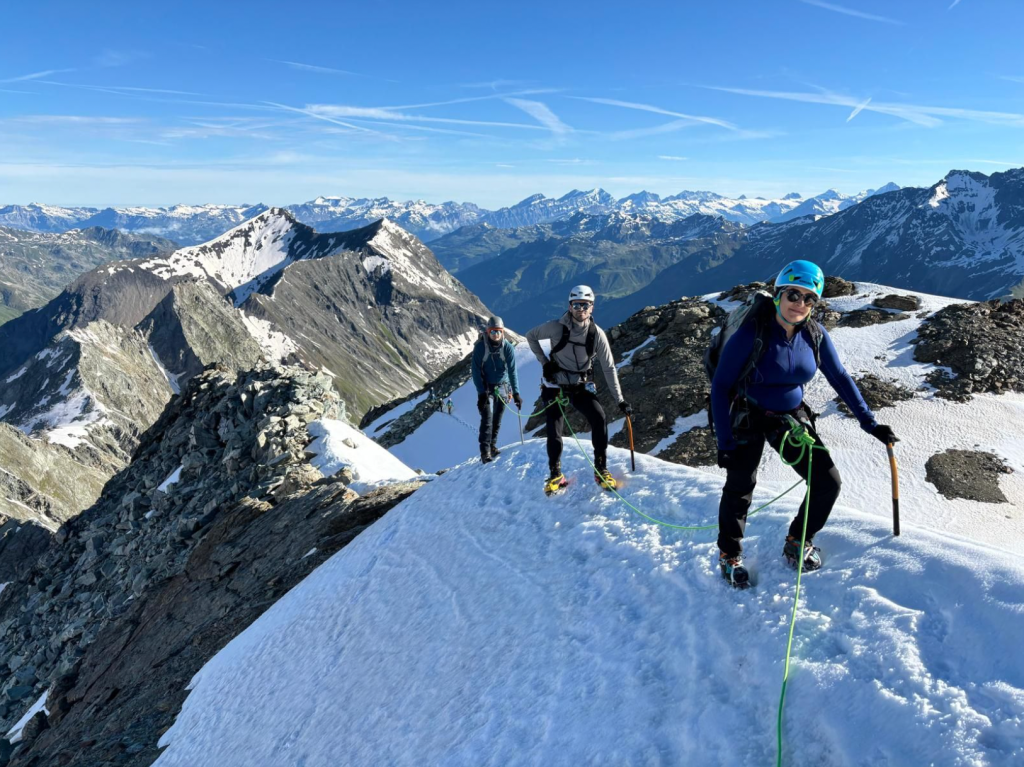
Pigne de la Le, Grimentz, Switzerland. Credit: Stuart McAleese
Route choice
Weather and conditions at the time may limit choice and it’s important to always retain flexibility when making your Scottish Winter plans, and to monitor the weather and conditions in the run up to any outings. Try to choose routes that resemble your alpine ambitions; if planning intro PD alpine ridges, there are lots of amazing winter ridges that would match that style like the Fiacaill ridge (Cairngorms), Aonach Eagach ridge (Glencoe), Ledge Route (Ben Nevis), and others.
If you’re thinking more towards AD alpine routes then try aiming for some Scottish classic routes, ridges, and gully routes such as Tower Ridge (Ben Nevis) and Curved Ridge (Buachaille Etive Mor) in your apline prep. It’s worthwhile considering your descending skills too, which are important in the Alps. This may already be included in the route of your mountaineering day, or on a climbing day you may choose to descend an easy ridge or gully.
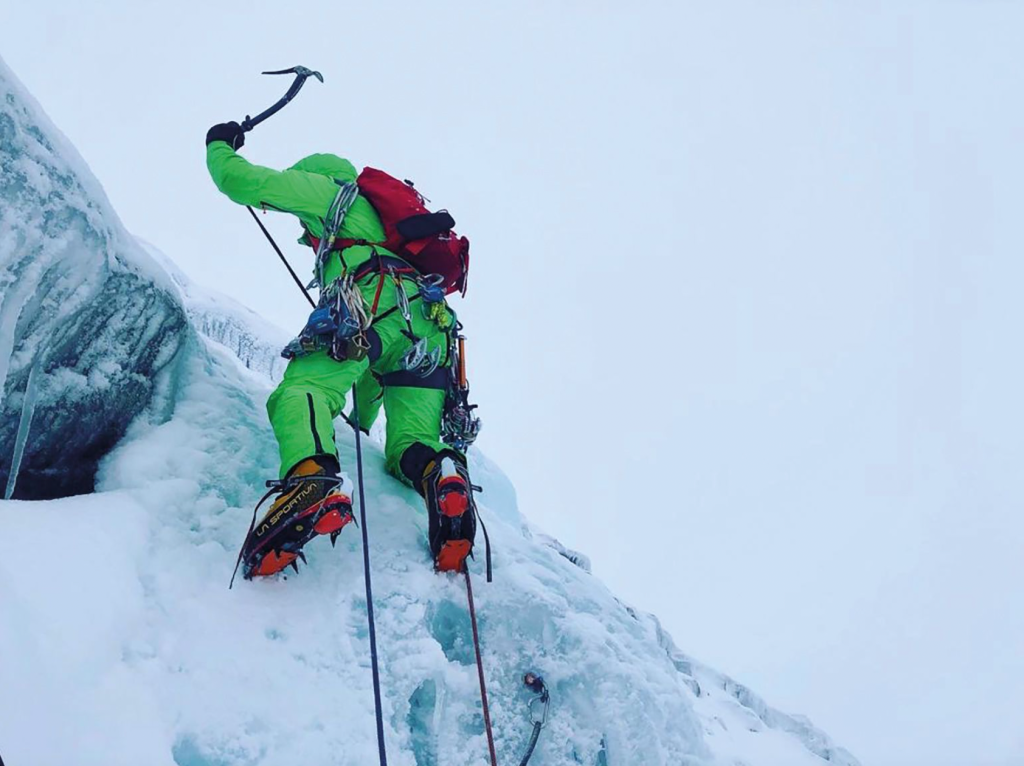
Ice climbing at Hells Lum, Cairngorms. Credit: Stuart McAleese
Developing your systems and equipment
In Scotland in Winter, we’re good at planning and preparing for the worst; the situations and conditions we experience in winter make us very resilient and creative. It’s sometimes difficult to transfer the all-weather approach we have in Scotland to operating in the Alps. Due to the scale and remoteness of the mountains, hazards such as rockfall and crevasses, and the importance of visibility for route finding, mean it’s more typical to wait for good weather in the Alps.
This means you can adopt a lighter and less approach; always pack your emergency equipment, but carrying only what you need helps keep you light and can improve your performance. It’s worth experimenting with this in Scotland. Sometimes if feels quite ruthless, but on the right day with a good weather forecast and conditions, try being more selective about what you carry.
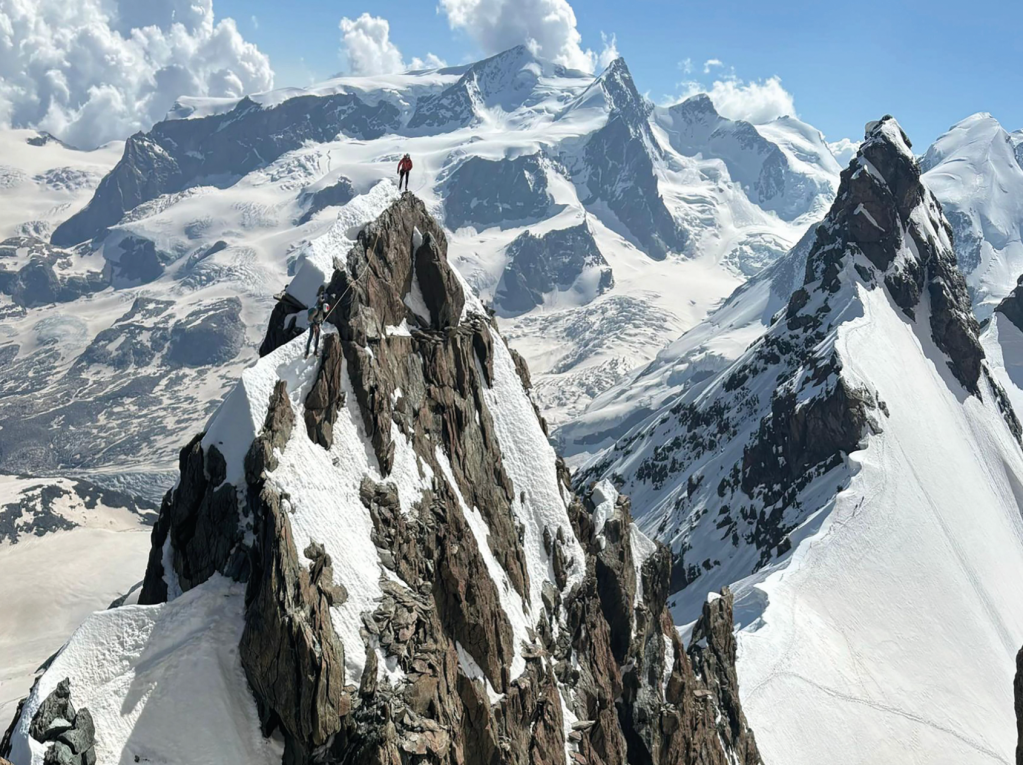
Climbers on the Half Traverse of the Breithorn (4160m), Zermatt, Switzerland. Credit: Stuart McAleese
Winter skills, techniques, and admin
All the skills and techniques that are essential for the Alps, such as use of ice axe and crampons, can be learned and developed in Scotland. Try to vary the terrain you move over while using your ice axe and especially crampons. Sometimes when you’re on an rock ridge in mixed/snowy conditions it’s more efficient to keep your crampons on even when moving over rock. Getting used to this, and moving over hard snow/ice using crampons, is good practice. Moving over hard snow and ice is included on most alpine routes especially those with glacial approaches/descents.
Winter mountaineering and climbing involves using the rope and making belays, in sometimes challenging weather and frozen conditions. Practice the required skills in your alpine prep as much as possible; in the Alps it’s quite normal to use the rope all day during glacial travel and throughout your route. Confident and efficient ropework helps the pace and efficiency of your alpine climbs. Learn about and use snow belays, as they’re a good foundation skill and an important element of crevasse rescue, and train your eye for winter rock belays and get efficient at construction and use of them, which will help when protecting your team on an alpine ridge and when seeing runner and belay opportunities readily.
Pace and efficiency are key in the Alps. It isn’t just about speed; you should aim for flow, which is often essential in Scotland on big remote routes. Try to work together and multitask, rather than everyone thinking and operating individually. Think ‘slow is fast’; aim to avoid making mistakes and do things properly once rather than having to stop later to correct a mistake. Having your preferred systems tried and tested in the Scottish winter will help contribute to your pace and confidence in the Alps.
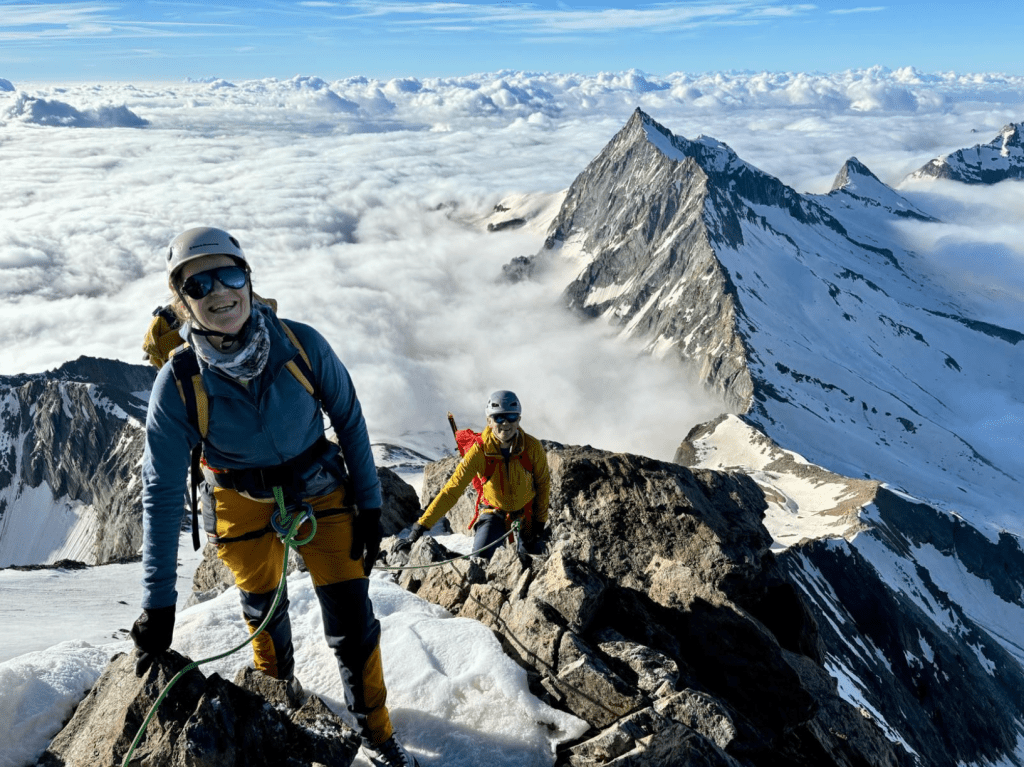
South Ridge of the Weissmies (4017m), Saas Almagell, Switzerland. Credit: Stuart McAleese
Fitness and training
Gym fitness or running helps keep you in shape, but there’s no substitute for the hill fitness gained from being in the mountains walking or climbing. If you and your team are looking for bigger days, build up slowly and think about linking mountains or climbing routes. In the Alps, focus is on height gain and time taken rather than distance. Height gain can vary depending on your chosen route and start point – starting from an alpine hut, its normal to expect something between 600m to bigger days of 1300m. Training in the UK, I find anything around a 1000m ascent day in the mountains is a good day out and would be great for alpine fitness.
It’s great celebrating the mountains and what winter in Scotland has to offer in terms of alpine prep. I hope this has inspired you and at the same time helped you and your team to plan and focus your adventures in Scotland when getting ready for the Alps.
Glenmore Lodge is sportscotland’s National Outdoor Training Centre. Based near Aviemore in the Cairngorms National Park and founded in 1948, it exists to support individuals to access the outdoors safely and responsibly through providing skills training and inspiring adventure. Whether it’s trying a new way to enjoy the outdoors, a guided adventure, or professional experienced Instructors are ready to support everyone to develop their skills and achieve their aspirations in the outdoors. Learn more at glenmorelodge.org.uk.

